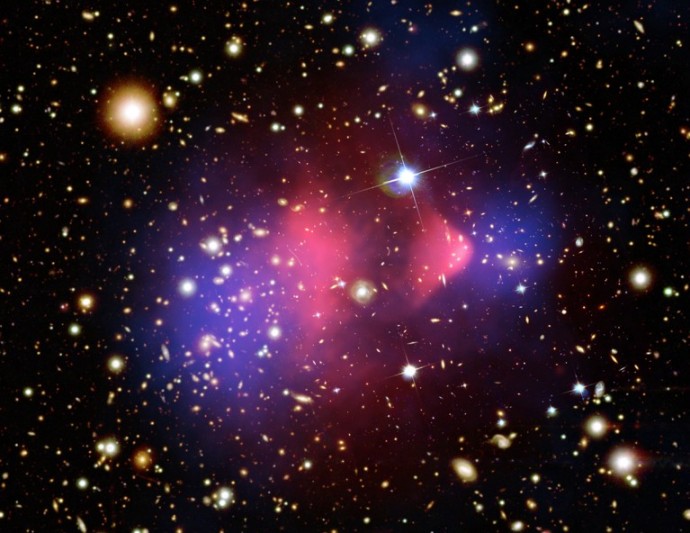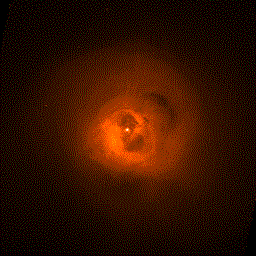Keshet Uri
The largest objects: galaxy clusters
Galaxy clusters, as the largest virialized objects in the present day Universe, provide an important link between cosmology and astrophysics. These relatively young (redshift up to a few), massive (up to a few 1015 solar masses, i.e. ~1046 kg) objects appear optically as concentrations of hundreds or thousands of galaxies, typically found at the nodes of the filamentary cosmic web (see Figure 1). Gravitational lensing maps suggest that the mass is predominately dark (see Figure 2 in blue). X-rays reveal that most of the baryonic mass is in the form of diffuse, hot (10-100 million K) plasma, called the intracluster medium (ICM), extending a few Megaparces (~1023 m) out from the center (see Figure 2 in red). Radio images reveal the presence of relativistic particles (AKA cosmic-rays) and magnetic fields that permeate the ICM.We address central open questions in the study of galaxy clusters, such as: what stabilizes the dense cluster cores from catastrophic cooling and collapse? what is the nature of the subtle features recently found in the centers of clusters, including spiral features, cold fronts, and X-ray cavities/radio bubbles (see Figure 3)? how do the cosmic-rays and magnetic fields form, evolve, and decay? can we identify the virial shocks that are thought to surround clusters?

Figure 1: Baryon number density n in a simulated Universe (Keshet et al. 2003). Galaxy clusters typically form in the nodes of the filamentary cosmic web. The image shows n in cm-3 units in a (32Mpc)2 slice of an SPH cosmological simulation.
Figure 2: Multi-messenger image of the bullet cluster (credit). The cluster is shown in optical (galaxies), X-rays (red, showing gas), and gravitational lensing (blue, tracing mass). The image size corresponds to ~(3Mpc)2.
Figure 3: The Perseus cluster core in a Megasecond Chandra X-ray exposure, with highlighted features: spiral cold fronts and X-ray cavities (Keshet 2011). The image size is 8' on the side, corresponding to ~250kpc.

